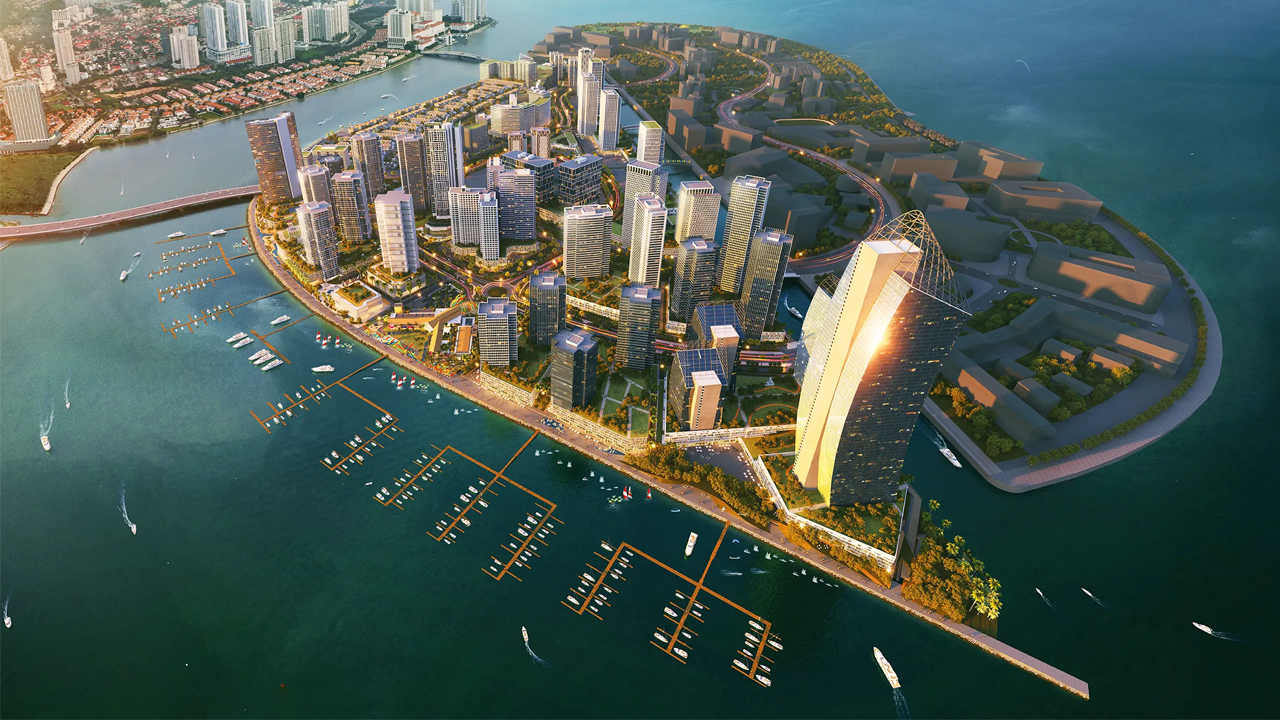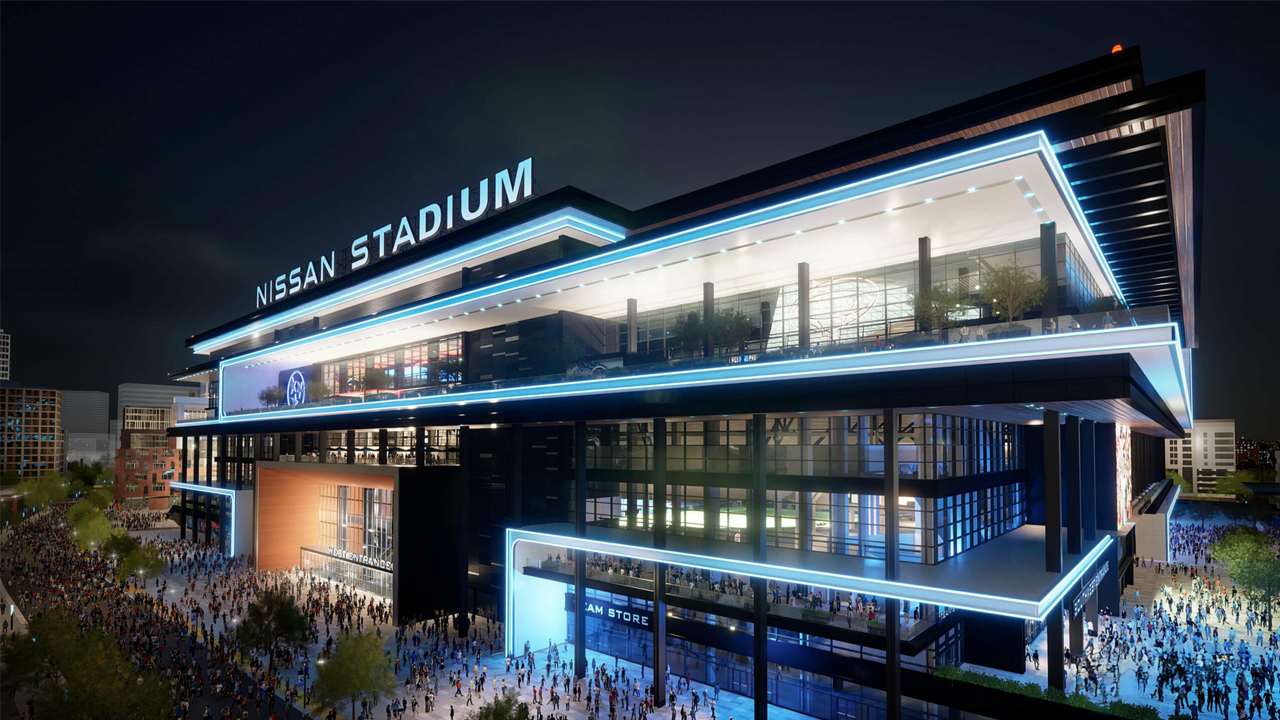Why New York’s Billionaires’ Row Is Half Empty
- Youtube Views 20,237,327 VIDEO VIEWS
Video hosted by Fred Mills.
Billionaires’ Row in New York City set off a super-slender skyscraper revolution. Today, the towers are an astounding display of wealth, prestige and engineering firsts. But they’re also kind of empty.
Meanwhile, finding an affordable apartment in the city as a non-billionaire can be nearly impossible.
So, we wanted to know – what made something like Billionaires’ Row possible and what impact is it having on the world of wealth, architecture and construction?
Pushing the bounds of engineering
Just south of Central Park sit some of the most exclusive homes anywhere in the world. There are no official gates to Billionaires’ Row, but the name refers to a handful of buildings on and around West 57th Street.
Nestled alongside iconic New York landmarks like Carnegie Hall, The Russian Tea Room and The Plaza Hotel, you’ll also find 432 Park Avenue, 53W53, 111W57, One57 and Central Park Tower.
A little further out you have 220 Central Park South, 520 Park Avenue and 252 East 57th Street.

Above: Billionaires' Row is a stretch of ultra-luxury buildings on and around West 57th Street.
Skyscrapers have slowly been getting taller and thinner for years. But Billionaires’ Row has given rise to a new form of skyscraper entirely – the super-slender residential tower.
In Manhattan space comes at a premium, which means if you want to build big, you have to build up. To develop the small sites they’d secured with buildings tall enough to offer Central Park views, developers on Billionaires’ Row spent years acquiring the air rights for the properties around their lots.
That meant that they could combine those new air rights to build their property taller, and ensure those nearby buildings won’t block their newly built views of Central Park. It’s sort of like piecing together a very expensive puzzle.

Above: Developers combined the air rights of nearby properties in order to build taller than typically allowed.
New York’s building code considers a building “slender” if it has a width-to-height ratio of 1:7. But the towers on Billionaires’ Row go far beyond that.
One57 was the first of the bunch to complete in 2014 with a ratio of 1:8. Then came 432 Park Avenue with a ratio of 1:15. From there, 53 West 53rd, 111 West 57th Street and Central Park Tower all joined the ranks of super-slender skyscrapers on Manhattan’s skyline.
Today, the thinnest of the bunch is 111 West 57th Street. The 85-storey building is officially the world’s thinnest skyscraper - it’s just 18 metres wide but rises to 435 metres in height. That’s a width-to-height ratio of 1:24.
And of course, when you’re 400 metres in the air, you have to think about the wind. Engineers have a few tricks they can use to keep the building from swaying too much, like constructing setbacks on the building’s facade, leaving the glass out of mechanical floors and installing a tuned mass damper at the top of the building.

Above: 432 Park left out the glass on mechanical floors to allow wind to flow through the building and reduce the sway. Image courtesy of SERHANT.
Of course, we do have to acknowledge some of the issues that have cropped-up now that construction has finished. Residents of 432 Park Avenue sued the developers for a series of construction flaws, including flooding, power outages, faulty elevators and a noise caused by the building swaying in the wind.
CIM Group has not responded to our repeated requests for comment on the lawsuit.
How wealth is reshaping our buildings
Now, there’s a logic to the super-slender tower. The taller you build, the more value you can squeeze out of that small plot of land you were able to find on Manhattan island.
To make the construction of a super-slender tower worth it, you have to make those units really, really expensive. That’s where luxury real estate brokers like Ryan Serhant come in.
“Billionaires’ Row is a pretty global demographic and a global city, so there's a lot of pied-a-terres, so part time owners, there's a lot of investor owners,” Serhant, founder and CEO of SERHANT., told The B1M.
“You know, we're selling the penthouse right now for 432 Park for $169 million. The owner has never been there and it's an investment. It's an asset. It's like owning a Picasso.”

Above: Ryan Serhant sat down to talk with The B1M's Fred Mills in Manhattan.
Billionaires’ Row has essentially created an entirely new asset class of luxury real estate.
That’s partly because there’s simply a lot more money to go around. The amount of money being invested around the world has grown massively, creating what some researchers call a “giant pool of cash.”
But alongside this explosion of global wealth, wealth inequality has also grown. A smaller slice of people control a bigger share of the world’s wealth. And that means the people at the top have bigger and bigger bank accounts.
One place to put some of that money? Luxury real estate, like the units on Billionaires’ Row.
“This is historically unprecedented, the amount of money, the amount of very wealthy people with that money putting into the built environment,” Matthew Soules, architect and associate professor at University of British Columbia said.
“That money mutates the built environment. It mutates architecture.”
To really understand why our buildings are changing shape, it’s helpful to get to grips with a financial concept called “liquidity.” Stick with us, and Billionaires’ Row will start to make a lot more sense.

Above: Professor Soules argues that real estate is beginning to move closer to cash on the liquidity spectrum.
All assets exist on a liquidity spectrum. On one end you have cash, the most liquid asset of all. On the other is real estate. Think - a house with a pitched roof and a backyard. Elsewhere along the spectrum you have things like artwork and stocks and bonds.
“My argument is that the logics and practices of finance capitalism is to transform buildings in such a way that they move down the liquidity spectrum to become more like a stock, more like cash,” Professor Soules said.
With fewer units in the building, you can start to control more of the variables that typically make a house a non-liquid asset. The elevator opens directly to the apartment. There’s no backyard that you have to maintain, no street-level windows to protect from vandals on the ground, no leaky roof you need to fix.
“This means that you could own a unit in a building like 432 Park and almost never visit it, or maybe never go there, and you can be reasonably assured that it's going to be not problematised by some unpredictable public usage,” Professor Soules said.
New York City’s regulatory loopholes
Even with the money and engineering to make buildings like this possible, super-slender skyscrapers can’t just pop up anywhere.
Developers need permission to get the projects off the ground. And there are restrictions on how tall developers are allowed to build. But in New York, there are a lot of different loopholes developers can jump through to go beyond the limits.

Above: Billionaires' Row developers took advantage of loopholes in NYC's zoning policies to build taller and thinner than ever before. Image courtesy of SERHANT.
That’s where something called “incentive zoning” comes into play.
Zoning is a set of rules that establishes the shape of the city. Things like how tall a building can be and how much space must stay between structures are all covered in the city’s zoning policy.
Incentive zoning is when the developer can break those rules to a degree, as long as they do something in exchange that’s to the public benefit. Examples include building a public plaza, park or upgrading a subway line.
Just to the west of Billionaires’ Row, New York City used zoning incentives with the Hudson Yards development to upgrade the subway, create new public parks and expand the nearby Javits Center.

Above: Incentive zoning was also used in the Hudson Yards development in Manhattan.
432 Park Avenue was able to rise so high in part because of another loophole in the city’s zoning laws. Any floors used for mechanical or structural equipment don’t count towards the total height of the building.
And at 432 Park, roughly a quarter of its floors are reserved for equipment, not apartments.
There are legitimate reasons to have so much space reserved for mechanics. For one, the open-air mechanical floors allow wind to flow through the building in order to reduce any sway. And of course, you need space to store the heating, air conditioning and elevator motors.
But there’s an ongoing debate about whether developers are exploiting the rule in order to build further into the sky. Is this great architecture or capitalist ambition? Can those things be the same thing? Is that the very essence of New York?
Why so many units are sitting empty
For all the effort, money and planning that’s gone into these buildings, it’s striking just how many of the units seem empty. It turns out there’s a couple different reasons for it - they’re either unsold or simply unoccupied.
There are quite a few Billionaires’ Row properties still on the market. An analysis by SERHANT. found that nearly half of the units in seven of the buildings were unsold in August 2021. That’s $6.7 billion worth of condos still on the market without a buyer.
That might be because what was initially unique about One57, the Central Park views, floor to ceiling windows and units sprawling an entire floor, was quickly replicated by the other super-tall residential towers that popped up. Now, if you’re in the market for an ultra-luxury apartment in Manhattan you have a lot more options.

Above: Luxury real estate sales in Manhattan. Data courtesy of Miller Samuel/Douglas Elliman
For years, the luxury real estate market in New York City had more supply than demand. But that’s starting to change. By September 2021, Manhattan hit record high sales of luxury properties, according to a report by Miller Samuel/Douglas Elliman.
But perhaps the more interesting case is the units that are sold, but nobody lives there. At least not all the time. They’re second, third or fourth homes, or simply just a way to store their wealth.
Every few years, the City of New York does a big Housing and Vacancy Survey. In 2017, they found there were 75,000 pied-à-terre properties across the city, up from 55,000 in 2014.
ATTOM Data Solutions found that in the two zip codes where most Billionaires Row properties are located, roughly half of the single family homes and condos aren’t occupied by their owners. In the rest of the city, the owner occupancy rate is closer to 75%.
Now, that doesn’t necessarily mean all of these units are sitting empty, they could be rented out by their owners who live elsewhere. But none of the Billionaires Row developers would share their occupancy rates with us, and this data gives us a glimpse into how the area around Billionaires Row compares with the rest of New York.

Above: Owner-occupancy rates for single family homes and condos in the two zip codes around Billionaires' Row. Data courtesy of ATTOM Data Solutions.
How the Billionaires’ Row buildings are taxed
Of course, there’s more to owning a property on Billionaires’ Row than just having a spot to stay on your trips to New York. You can also score a pretty hefty tax break.
In New York, condos are taxed as if they’re a rental apartment building. But the problem is nobody’s really renting a $100,000,000 apartment, so there’s no benchmark for what that rental value would even be. $10,000 a month or $100,000 a month, there’s no precedent for something that.
So, what ends up happening is the Billionaires’ Row condo is taxed the same as a unit that’s worth a fraction of the cost.
But that’s not all, ultra-luxury can also add on another massive tax break through the 421-a exemption. The 421a tax break was originally introduced in New York in the 1970s as a way to encourage developers to build residential housing, as the city was concerned about people leaving for the suburbs.
The rules have changed a lot over the years. Today, it’s been rebranded as the Affordable Housing New York program. Essentially, developers can get up to 100% of their property taxes erased for a set number of years if a fifth of their development is classified as affordable housing.

Above: One57's developers qualified for the 421-a tax break for building 66 units of affordable housing in the Bronx.
Despite none of the units in One57 being anywhere near “affordable” to a non-billionaire, it still benefits from this tax break. And according to Serhant, it’s an added draw for buyers considering purchasing a luxury condo.
“If you can defer most, if not all, of the monthly real estate taxes to the developer and then also pass that on to the owners, then the buyers jump on these options left and right,” Serhant said.
The New York City Independent Budget Office actually did a deep dive into One57’s use of the 421-a exemption. In order to qualify for it, the developers built 66 units of affordable housing in the Bronx, miles away from Billionaires’ Row.
The IBO estimated that exemption will cost the city an estimated $65.6 million in property tax revenue over 10 years. Still, it found that the way the state of New York values its condos provided an even greater tax break to One57’s owners than the affordable housing exemption.
Extell, the developer behind One57, didn’t respond to our requests for comment about the IBO report.
These tax discrepancies don’t just happen on Billionaires’ Row. Bloomberg found that one $2.1 million condo in Brooklyn came with a tax bill of just $157. Meanwhile, a condo in the Bronx worth roughly $235,000 paid nearly $4,000.
Zombie urbanism
There’s a term in Professor Soules' book called “zombie urbanism.” It’s used to describe a place that has a lot of housing units that are owned but not lived in most of the time. It’s not quite dead, but not fully alive. Sort of like what’s happening now on Billionaires’ Row.
But the phenomenon isn’t unique to Midtown Manhattan.

Above: Unoccupied housing is also a concern in Paris, among other cities.
In Paris, second homes are on the rise and in a handful of its districts, a quarter of the homes are sitting empty. Some of the most expensive neighbourhoods in London are eerily quiet at night as many of the properties are second residences.
In Melbourne, experts warned an entire district in a prime location could become a suburb of ghost towers due to unused property. And over in Toronto and Vancouver, tens of thousands of apartments sit vacant most of the year.
“I would say these buildings radically matter to everybody,” Professor Soules said. “The kind of system that produces those towers in Billionaires’ Row is the very same system that produces slums, homelessness and affordability crises.”
Proposals around the world
So, where does New York go from here? The city is in an affordable housing crisis and it’s not likely these empty luxury condos are going to be used to house the people who really need a place to live.
I think you'll see more people buying apartments for 50 to 100 million dollars in 10 years than you'll ever see before, which obviously means that there's going to be a very, very, very noticeable wealth gap in the world as the wealthier get wealthy and the poor get poorer,” Serhant said.
“And so who always gets screwed in all of these kinds of global financial shifts are the middle class, and that's the people who really do the work.”

Above: Protesters gathered to protest the 421-a tax abatement program in Manhattan in November 2021. Image courtesy of Fred Mills.
Across New York, there have been calls to rethink the city’s zoning policies and how condos are taxed. Paris, Vancouver and Singapore, and soon-to-be Toronto all have some form of tax on vacant apartments.
In Berlin and Barcelona, the government has threatened to seize empty buildings and turn them into affordable housing.
In 2019, New York State lawmakers proposed an annual recurring tax on second homes valued at more than $5 million, but it was derailed under intense lobbying from real estate groups. Instead, lawmakers embraced a one-time fee on the sale of multimillion-dollar homes.
“I hope that in 10 years time, we look back at Billionaires’ Row as a phenomenal mistake and a dozen missed opportunities,” Stein said.
“The skinny pencil towers on Billionaires’ Row are the most dramatic manifestation of this new world we live in,” Professor Soules said. “They are architecture as spatial financial form, not as shelter or cultural manifestation.”
None of the developers on Billionaires' Row have responded to our repeated requests for comment or interview for this story.

Above: One57 set off a super-tall skyscraper boom across New York City. Image courtesy of The Dronalist.
The legacy of Billionaires Row thus far
There's a saying that we shape our buildings and then afterwards those buildings, they shape us. And that's incredibly true of New York City.
The city is synonymous with the skyscraper. It's been shaped by those buildings. Each rose as the product of the events in the city at that time, and now they shape the city's future.
We had it with the Empire State and the Chrysler Building rising at the very end of the boom years. We had it again with the World Trade Center in the 1970s that stood through the 80s, 90s right up to 2001, and again when the city was rebuilding post-911, when it was trying to work out what it wanted to stand that now incredible site down at ground zero.
And now we've got it with Billionaires’ Row. These super slender skyscrapers have risen as a product of demand, loopholes, the desire for billionaires to get a view of Central Park and the city's zoning and planning regulations.
Whether you like them or not, whether they're occupied or not, whether they're casting a shadow or not, they are all now part of the city's story. They are part of the fabric of New York, until that next chapter gets written.
Video presented and narrated by Fred Mills. Special thanks to Ryan Serhant, Matthew Soules, Samuel Stein and The Dronalist. Additional footage from SERHANT., louisatalksbuildings, cody,boone, matalynnthayer, thevictoriashtainerteam, nilelundgren, nyconstructionphoto, Hey, it’s Kimberlee!, Periscope Film, Andrew M Cuomo, ABC News, CNBC, Municipal Art Society of New York, Streeteasy, Bloomberg, Euronews, Disney and OpenStreetMap contributors.
We welcome you sharing our content to inspire others, but please be nice and play by our rules.







